The Chamberlin Reader: The Education and Writings of H.D. Chamberlin 1907-1942
$35.00 Original price was: $35.00.$28.00Current price is: $28.00.
1 in stock
Product Description
Edited by Warren C. Matha
The Chamberlin Reader reveals the origins and methods of legendary American horseman, Harry Chamberlin’s riding system and tells the story of how American riding evolved in the twentieth century.
The Chamberlin Reader contains Chamberlin’s difficult-to-find writings on:
• Jumping
• Evaluating horses and their conformation
• Re-training off-the-track Thoroughbreds, polo ponies, and cavalry horses
• Developing the rider’s seat
• Riding cross-country
• Training methods that helped William Steinkraus win Olympic Gold in 1968
• Excerpts from texts that Chamberlin studied at West Point and in the basic and the advanced horsemanship courses at Ft. Riley’s Mounted Service School.
• And a rich collection of rare photos including:
-Never-before-published photos of the Inter-Allied Games of 1919 where the Italian jumping performance causes American officers to question traditional principles
-Reprint of a rare French cavalry booklet that describes in photos the Cavalry School at Saumur published when Chamberlin studied there
-Photos of Tor di Quinto where Chamberlin astounded his teachers while evaluating the Italian jumping and training methods
-Photos of the 1932 Olympics where the United States won its first Gold medals in Eventing and where Chamberlin won the Silver medal in Stadium Jumping
-Photos of the Chamberlin inspired methods of Ft. Riley.
The Chamberlin Reader describes the milestones in Harry Chamberlin’s career during which he created the foundation for what George H. Morris calls “The American Jumping Style” and establishes what James Wofford calls “a whole new system” for training horses and riders.
This book is the companion volume to General Chamberlin: America’s Equestrian Genius and contains valuable insights into the art and science of riding and training horses.
About the Editor:
Warren C. Matha retired from structured finance consulting in 2005. He inherited his lifetime love of horses, history, and cavalry from his father who served as an instructor in the horsemanship department at Ft. Riley and rode border patrol with the horse-mounted 5th Cavalry Regiment of the 1st Cavalry Division.
His father insisted, as a prerequisite to buying a horse, that he study, at age 14, the US Cavalry’s manual Horsemanship and Horsemastership as the source of all equestrian wisdom. He studied basic dressage with Thomas Poulin; he spent 45 minutes a day, 4 days a week, for 5 months on a longing line under the critical eye of Sharon Poulin, the wife of the Bronze Team medalist Michael Poulin. He spent an extended time in Europe to observe the training protocols of the riding schools at Saumur, Warendorf, and Vienna. George H. Morris’ discussion in The American Jumping Style regarding the contributions of American cavalry officers to show jumping inspired him to write the Chamberlin biography and its companion volume as a continuation of Mr. Morris’ fine work. He has ridden horses, off and on, for 60 years.
You must be logged in to post a review.
Related products
-
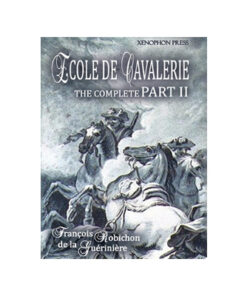
Ecole de Cavalerie Part II – Expanded
0 out of 5$34.95 Read more -
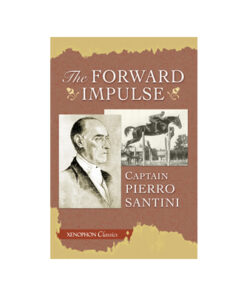
The Forward Impulse by Piero Santini – Xenophon Classics
0 out of 5$29.95 Read more -

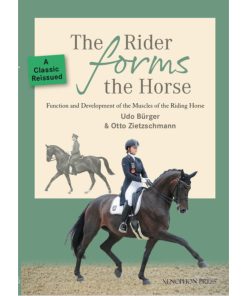
The Rider Forms the Horse: Function and Development of the Muscles of the Riding Horse By Udo Bürger and Otto Zietzschmann
0 out of 5$39.95 Add to cart -
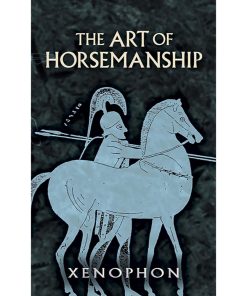
The Art of Horsemanship by Xenophon
4.50 out of 5$24.95 Add to cart -

The Horse: A Galloping History of Humanity by Timothy C. Winegard
0 out of 5$35.00 Add to cart

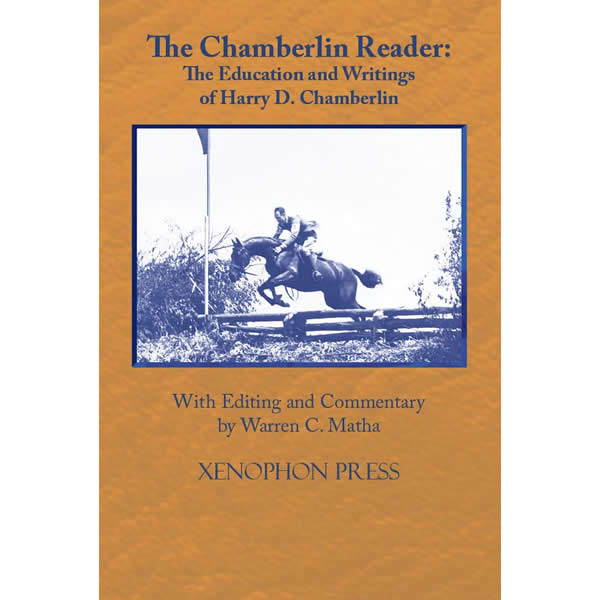
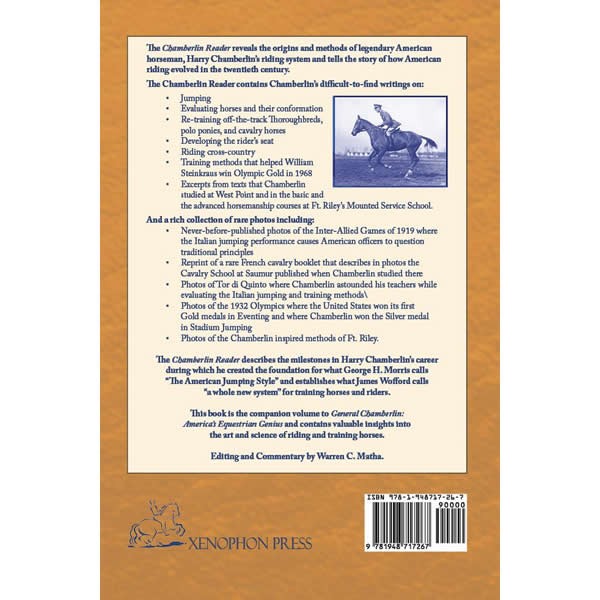

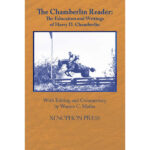
Reviews
There are no reviews yet.